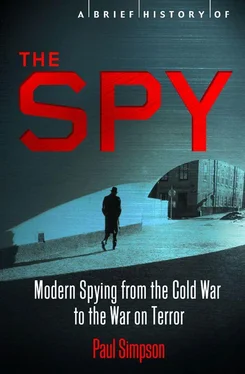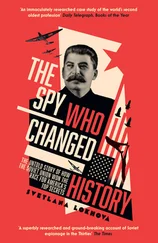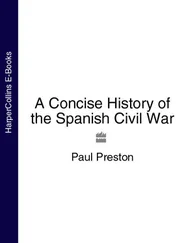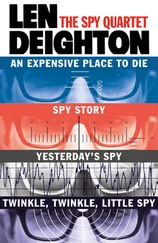Paul Simpson - A Brief History of the Spy
Здесь есть возможность читать онлайн «Paul Simpson - A Brief History of the Spy» весь текст электронной книги совершенно бесплатно (целиком полную версию без сокращений). В некоторых случаях можно слушать аудио, скачать через торрент в формате fb2 и присутствует краткое содержание. Город: London, Год выпуска: 2013, ISBN: 2013, Издательство: Constable & Robinson, Жанр: Прочая документальная литература, на английском языке. Описание произведения, (предисловие) а так же отзывы посетителей доступны на портале библиотеки ЛибКат.
- Название:A Brief History of the Spy
- Автор:
- Издательство:Constable & Robinson
- Жанр:
- Год:2013
- Город:London
- ISBN:9781780338910
- Рейтинг книги:3 / 5. Голосов: 1
-
Избранное:Добавить в избранное
- Отзывы:
-
Ваша оценка:
- 60
- 1
- 2
- 3
- 4
- 5
A Brief History of the Spy: краткое содержание, описание и аннотация
Предлагаем к чтению аннотацию, описание, краткое содержание или предисловие (зависит от того, что написал сам автор книги «A Brief History of the Spy»). Если вы не нашли необходимую информацию о книге — напишите в комментариях, мы постараемся отыскать её.
A Brief History of the Spy — читать онлайн бесплатно полную книгу (весь текст) целиком
Ниже представлен текст книги, разбитый по страницам. Система сохранения места последней прочитанной страницы, позволяет с удобством читать онлайн бесплатно книгу «A Brief History of the Spy», без необходимости каждый раз заново искать на чём Вы остановились. Поставьте закладку, и сможете в любой момент перейти на страницу, на которой закончили чтение.
Интервал:
Закладка:
While they may not have led to the great coup for which the FBI had been hoping, Elizabeth Bentley’s revelations were a bad blow for Moscow Centre. As well as blowing the cover of numerous useful sources, her 107-page testimony listed all aspects of Soviet tradecraft and operations in the United States. Coupled with Igor Gouzenko’s material, and the sudden loss of all of their agents inside the OSS when that organization was suddenly shut down at the start of October 1945, things did not look good for the Soviets. However, they still had their ace in the hole — Kim Philby, and the other members of the Magnificent Five. But even their time was running out.
Igor Gouzenko and Elizabeth Bentley’s testimony and information may have given American and British counterintelligence organizations much to ponder, but one of the greatest sources of information about the Soviet activity in the West — and the one that led directly to the uncovering of Kim Philby’s spy ring — came from the Russians themselves. Even though much of the intelligence gleaned from it was discovered in the first few years of the Cold War, its existence, and the insight it gave into Soviet activities against the West, were factors in the emergence of the decades-long conflict, and the decision by President Truman to go pro-active in his dealings with the Soviets.
On 1 February 1943, Soviet diplomatic communications came under greater scrutiny than before, when the US Army’s Signal Intelligence Service began the project that would later be code-named Venona. Based at Arlington Hall in Virginia, this code-breaking programme would eventually be as important to those fighting Soviet infiltration as the work done at Bletchley Park on the Enigma material was to the Allies during the Second World War.
Put simply, the code-breakers on Venona were looking at literally thousands of messages that had been sent back and forth between Moscow and its diplomatic missions around the world. They realized that in addition to orders and reports for the various trade delegations and diplomats at the missions, there were instructions going to the representatives of the different Soviet intelligence groups: the NKVD, the GRU and the GRU-Naval (the Soviet Naval Intelligence staff).
The process of breaking the code was painstaking, and progress was slow. A weakness in the Soviet cryptographic system was discovered within a year of Venona’s inception, and further breakthroughs followed in 1944, but it wasn’t until 1946 that cryptographer Meredith Gardner was able to read portions of NKVD messages. As William P. Crowell explained when the Venona project was declassified in 1995:
The Venona cryptosystems… should have been impossible to read. They consisted of a code book in which letters, words, and phrases were equated to numbers. So a code clerk would take a plain text message and encode the message using numbers from the code book. This would have presented a significant challenge itself depending on how long the code book was used. However, the messages were further modified, in other words double-encrypted, by use of a one-time pad. The use of a one-time pad effectively randomizes the code and renders it unreadable. The key to the Venona success was that mistakes were made in the construction and use of the one-time pads — a fact that was discovered only through brute force and analysis of the message traffic.
According to Oleg Gordievsky’s history of the KGB, the sheer number of messages travelling between the USSR and the various missions worldwide was so great towards the end of the Second World War that Moscow Centre sometimes sent out the same ‘one-time’ pad again. (The cypher officer responsible was apparently shot.)
As the work continued, more and more code names of Soviet agents were revealed — backing up information given by Gouzenko and Bentley — and the team at Arlington Hall were supplemented by British analysts as well as representatives from the FBI.
By no means all the messages were decoded, but enough was revealed to allow investigators to pursue leads. A burned codebook, found on the battlefield at the end of the war, proved eventually to be useful when some of its contents correlated to Venona, but this only came to light nearly a decade after its discovery.
The Soviets were, unsurprisingly, concerned about this work. Elizabeth Bentley mentioned in one of her debriefings that Moscow had been aware to a certain extent of the work going on there as early as 1944. In 1945, they managed to infiltrate an agent, Bill Weisband, into Arlington Hall, whose identity was ironically uncovered when the relevant instructions formed one of the Venona documents. However, even after his treachery was discovered in 1950, Weisband was never prosecuted for espionage since both the British and Americans agreed that the Venona project was too valuable to be mentioned even at an ‘in camera’ hearing.
The Soviets could do little about Venona: they didn’t know which messages the Arlington Hall cryptographers would be able to read, so, as Gordievsky said, ‘It was immediately clear… that Venona represented a series of time-bombs of potentially enormous destructive force for its agent networks.’
The biggest secret that Moscow wanted kept quiet was its access to American and British research into the atomic bomb. One of the first intelligence messages from 1944 that was decoded, in December 1946, related to code name ENORMOZ — the Manhattan Project — providing the Soviets with a list of the names of the leading scientists working on the atomic bomb. Other messages gave specific details about progress on the development of the device, which the Soviet agents planted at the top secret Los Alamos base in New Mexico hoped would enable their scientific counterparts to maintain parity with the American project.
The main Soviet agent was Dr Klaus Fuchs, a German Communist Party member who had moved to England in 1933. He was brought on board the British atomic bomb project under Professor Rudolf Peierls in 1941. MI5 had been reluctant to give Fuchs security clearance, but eventually he was passed — at which point he immediately travelled to London to offer his services to the Russians! He would later claim that he didn’t know whether he was working for the GRU or the NKGB, protesting that he didn’t realize there was more than one branch of Soviet intelligence.
Fuchs was sent across to America in December 1943, and transferred to the control of another key Russian spy, Harry Gold, to whom he passed numerous details on the bomb, supplementing the material that another Russian spy, David Greenglass, was providing. This would continue throughout the rest of the Second World War, with Greenglass leaving the Los Alamos headquarters in February 1946, and Fuchs heading over to the British Atomic Energy Research Establishment at Harwell, Oxfordshire, four months later.
However, at almost exactly the same time as the Russians were benefitting from Fuchs’ treachery and exploding their own atomic bomb, the Venona transcripts were providing clues to both Fuchs’ and Greenglass’ identities. Fuchs was arrested and confessed in January 1950, while Greenglass admitted his role in June that year. Information that Green-glass provided would prove critical in winding up the Soviet network run by Julius and Ethel Rosenberg (see chapter 4).
In addition to cutting off the Soviets’ inroads into the atomic establishment, Venona also crippled one of their major operations in Australia. Since 1943, the NKVD residency in Canberra had great success penetrating the Australian Ministry of External Affairs, which gave them access to a lot of British secrets. Jim Hill and Ian Milner, the two best Soviet agents there, were compromised by the Venona material. Early in 1948, MI5 sent their Director-General, Sir Percy Sillitoe, accompanied by Roger Hollis, to conduct an investigation, maintaining the cover story that a British mole in Soviet intelligence had passed on the agents’ details, rather than risk compromising Venona. The loss of these agents was such a serious blow to Moscow Centre that by the time the KGB Resident Vladimiri Petrov defected in 1954, they had still not been able to achieve more than minor breaches of Australian security.
Читать дальшеИнтервал:
Закладка:
Похожие книги на «A Brief History of the Spy»
Представляем Вашему вниманию похожие книги на «A Brief History of the Spy» списком для выбора. Мы отобрали схожую по названию и смыслу литературу в надежде предоставить читателям больше вариантов отыскать новые, интересные, ещё непрочитанные произведения.
Обсуждение, отзывы о книге «A Brief History of the Spy» и просто собственные мнения читателей. Оставьте ваши комментарии, напишите, что Вы думаете о произведении, его смысле или главных героях. Укажите что конкретно понравилось, а что нет, и почему Вы так считаете.












